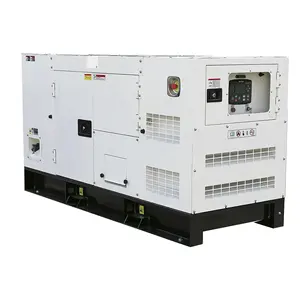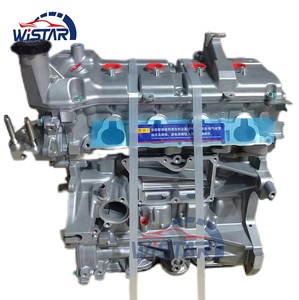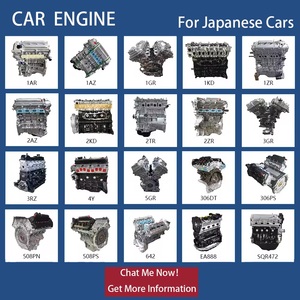
All categories
Featured selections
Trade Assurance
Buyer Central
Help Center
Get the app
Become a supplier

(2974 products available)













































The 20B engine is a rotary engine that is part of the Mazda Wankel family. It has three rotors and is known for its smooth power delivery and high specific power output. The 20B engine generates more power than piston engines with a similar physical size.
20B engines are popular in performance-oriented applications, including sports cars, racing vehicles, and custom-built vehicles. They offer unique characteristics that appeal to enthusiasts who seek high-performance capabilities and distinctive driving experiences.
There are two main types of 20B engines, which are the Mazda 20B and the 20B turbo engine.
Here are the specifications of the 20B rotary engine:
Engine Displacement
The total displacement of the 20B engine is 2.0 liters or 2000cc. It is the sum of the 3 rotor's surface area. The 3 rotors 2W, 2W, and 2W, each have a maximum diameter of 3.0 cm, and the 3 rotor's 2W x 3 x π x 3 x 3 = 28.3 cm2. Multiply 28.3 cm2 by the engine's 2.0 liters to get 2000cc.
Max Power
The maximum power of the 20B engine is 280 hp or 209 kW at 1,0000 rpm. The 20B's 280 hp is the same as the 200 kW power from piston engines. Rotary engines can produce more power from their smaller engine sizes compared to piston engines.
Max Torque
The maximum torque of the 20B engine is 310 Nm at 3,000 rpm. The rotary engine's high torque at low rpm is great for accelerating fast and pulling heavy loads.
Engine Weight
The 20B engine weighs 130 kg. The rotary engine's light engine weight helps vehicles accelerate fast, brake fast, and change direction fast.
Fuel System
The 20B engine uses a direct fuel-injection system to inject fuel directly into the combustion chamber of each rotor during the intake stroke. Rotary engines can use high-octane gasoline or diesel fuel to generate more power from the small engine size.
Cooling System
The 20B engine uses a liquid cooling system to maintain the engine at optimal temperatures. The cooling system uses water and coolant to remove heat from the engine and prevent overheating. The cooling system has hoses, a water pump, and a radiator.
Lubrication System
The 20B engine uses a pressurized lubrication system to supply oil to the engine's moving parts, such as the rotors, eccentric shaft, and apex seals. The lubrication system has an oil pump, oil filter, and oil pan.
Ignition System
The 20B engine uses a distributor ignition system with two distributors, one for each combustion chamber. The ignition system uses spark plugs to ignite the fuel-air mixture in the combustion chamber. The system has two ignition coils, spark plugs, and a control unit.
Fuel Requirement
The fuel requirement for the 20B engine is high-octane gasoline with a minimum rating of 98 RON or diesel fuel with a minimum cetane number of 50. The higher octane in gasoline or more cetane in diesel allows the fuel to resist knocking or premature combustion under high pressure from the engine's rotors.
Here are some tips for maintaining the 20B rotary engine:
When purchasing an original 20B rotary engine for resale, here are some important factors to consider.
Condition
The 20B engines come in various conditions; there are engines in mint condition and others in used condition. The engines in mint condition have a higher value and are more sought after. However, they also come at a higher price compared to the other conditions.
Completeness
When purchasing a 20B engine, it is important to consider whether it comes with all the necessary components. Does it come with the alternator, starter motor, air intake system, exhaust manifold, or other components? This is important because these engines can also be sold without some components, which affects their value. The completeness of the engine affects its performance and ability to run smoothly.
Warranty
It is important to check whether the 20B engines purchased have a warranty. The warranty is the supplier's confidence in the quality of the engines. Additionally, the warranty allows for repairs or replacement of the engine in case of failure.
Price
Price is an important factor when purchasing a 20B engine. Different suppliers offer different prices based on the quality and condition of the engine. At the same time, buyers should also purchase within their budget and consider the value of the engines.
Replacing the 20B rotary engine can be a daunting task, but with the right tools and knowledge, it can be done. Before starting, ensure that the workspace is clean and well-lit. Gather all the necessary tools, including sockets, wrenches, jacks, and engine hoist. Here's a step-by-step guide on how to replace a 20B rotary engine:
Disconnect the Battery
The first step in replacing any engine is to disconnect the battery. This will prevent any electrical shorts or accidents while working on the vehicle.
Drain Fluids
Next, all fluids should be drained from the engine. This includes oil, coolant, and fuel. Be sure to dispose of these fluids according to local regulations.
Remove the Intake and Exhaust
The intake and exhaust systems should be removed to allow access to the engine. This includes removing the intake manifold, exhaust manifold, and any associated piping.
Disconnect Electricals
All electrical connections to the engine should be disconnected. This includes the wiring harness, sensors, and any other electrical components connected to the engine.
Disconnect the Transmission
The engine is connected to the transmission via a bell housing. This connection should be disconnected, and the engine can be separated from the transmission.
Detach the Engine Mounts
The 20B engine is held in place by engine mounts. These mounts should be detached to allow the engine to be removed from the vehicle.
Use an Engine Hoist to Remove the 20B Engine
Once all connections to the engine have been disconnected, an engine hoist can be used to lift and remove the engine from the vehicle. Carefully follow the manufacturer's instructions when using the engine hoist.
Install the New 20B Engine
To install the new 20B engine, reverse the steps taken to remove the old engine. Ensure all connections are made securely and correctly. Once the engine is installed, refill all fluids and connect the battery.
Q1: What vehicles typically use the 20B engine?
A1: The 20B engine was used in some Mazda RX-7 models, particularly in the RX-7 Spirit R and the RX-7 Type RZ versions. These vehicles are known for their lightweight construction and sports car performance, making them suitable for rotary engines like the 20B.
Q2: Can the 20B engine be swapped into other vehicles?
A2: Yes, the 20B engine can be swapped into other vehicles, but it requires significant modifications to the engine bay, cooling system, exhaust system, and drivetrain. Additionally, the rotary engine's unique characteristics must be accommodated in the vehicle's electronics and fuel system.
Q3: What are the advantages of the 20B engine compared to piston-based internal combustion engines?
A3: The advantages of the 20B engine compared to piston-based internal combustion engines are its compact size, lightweight construction, high power-to-weight ratio, and smooth operation. Rotary engines also have fewer moving parts, which can lead to lower maintenance requirements.
Q4: Is the 20B engine suitable for turbocharging?
A4: Yes, the 20B engine can be turbocharged, and many enthusiasts opt for turbocharging to increase power output further. Turbocharging allows for more air and fuel to be injected into the combustion chamber, resulting in increased torque and horsepower. However, proper cooling and fueling solutions are required when installing a turbocharger.
Q5: What is the potential for tuning and performance modifications with the 20B engine?
A5: The 20B engine has a significant potential for tuning and performance modifications. Enthusiasts can increase power output through turbocharging, intercooling, exhaust system upgrades, intake modifications, engine management systems, and other performance-oriented changes. The engine's rotary design allows for smooth and responsive power delivery, making it a popular choice for tuning enthusiasts.